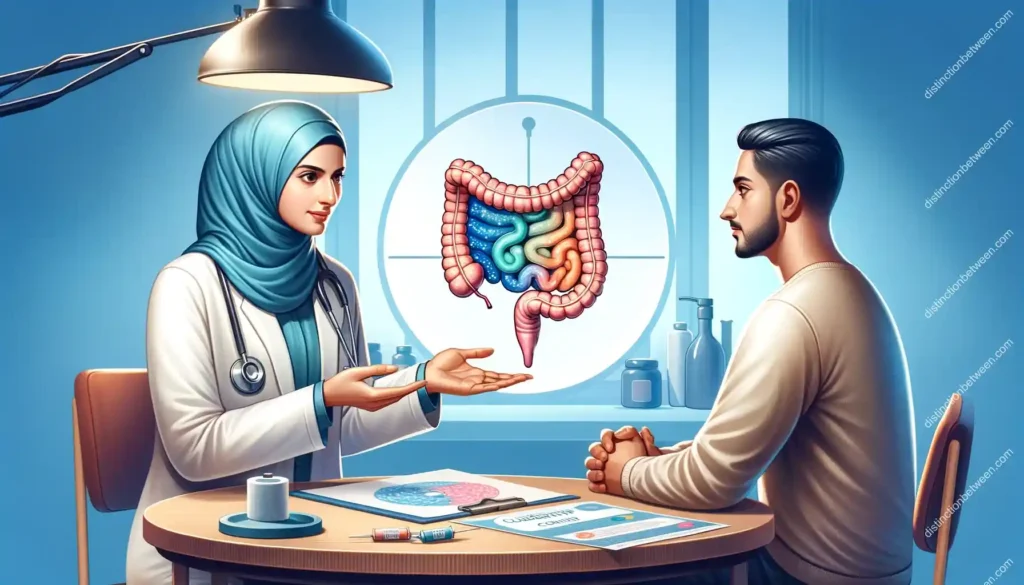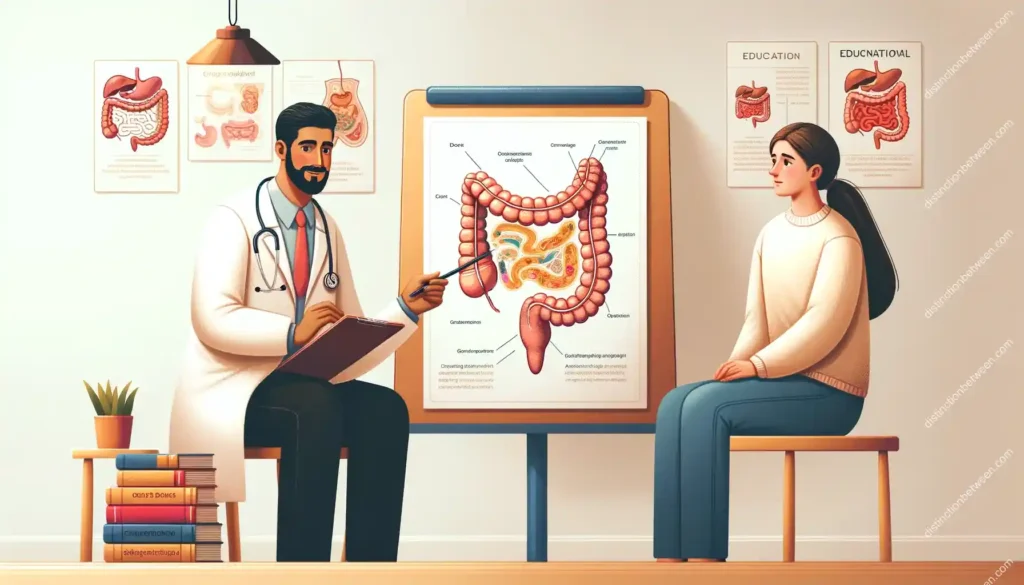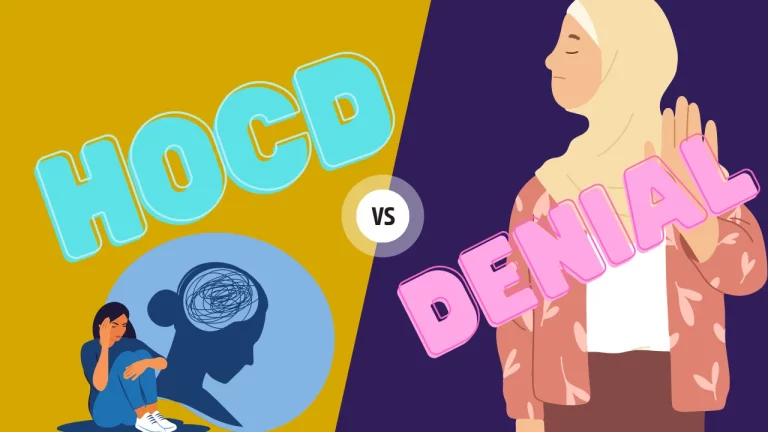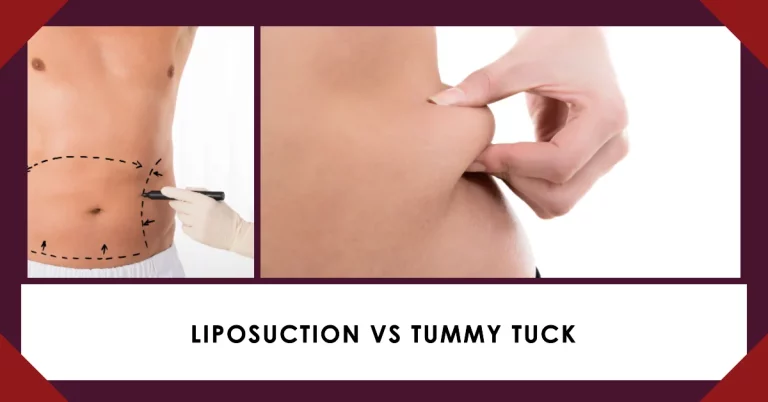Difference Between Ulcerative Colitis and Crohn’s Disease PPT
Inflammatory bowel disease (IBD) is a chronic and debilitating condition affecting millions of people worldwide. While there are different types of IBD, two major forms stand out: ulcerative colitis and Crohn’s disease. While both diseases share similar symptoms, their underlying mechanisms, affected areas of the gastrointestinal tract, and potential complications differ significantly.
Understanding these differences is crucial for effective diagnosis, treatment, and management of IBD. This blog post aims to provide a comprehensive overview of both ulcerative colitis and Crohn’s disease, highlighting their key characteristics and distinctions.
Key Differences:
| Feature | Ulcerative Colitis | Crohn’s Disease |
|---|---|---|
| Location of Inflammation | Continuous inflammation affecting the lining of the colon and rectum | Patchy inflammation affecting any part of the gastrointestinal tract, from the mouth to the anus |
| Extent of Inflammation | Only affects the mucosal layer of the colon | Can affect all layers of the gastrointestinal tract, including the muscularis propria and serosa |
| Typical Symptoms | Bloody diarrhea, abdominal pain, rectal urgency, tenesmus | Abdominal pain, diarrhea, weight loss, fatigue, fever, fistulas, perianal disease |
| Diagnosis | Colonoscopy, biopsy, stool tests | Colonoscopy, biopsy, capsule endoscopy, imaging tests |
| Treatment Options | Medications (aminosalicylates, corticosteroids, immunosuppressants), surgery (colectomy) | Medications (aminosalicylates, corticosteroids, immunosuppressants, biologics), surgery (resection) |
Understanding Ulcerative Colitis

Imagine your digestive system as a winding road, lined with smooth, healthy tissue. Now, picture that same road, but with patches of inflammation, redness, and even tiny ulcers. This, my friend, is the world of ulcerative colitis (UC), a chronic inflammatory disease affecting the colon, the last stretch of your digestive highway.
While the exact cause of UC remains a mystery (insert detective emoji), it involves an overactive immune system mistakenly attacking the colon lining. This leads to a cascade of symptoms that can range from inconvenient to downright disruptive.
The Symptoms: Warning Signs on Your Digestive Road
Imagine driving down your road and suddenly hitting a series of bumps. That’s what UC symptoms can feel like. Here are some of the most common:
- Bloody diarrhea: This is the hallmark symptom of UC. It can range from mild to severe, with some people experiencing frequent episodes and others having more manageable symptoms.
- Abdominal pain and cramping: These can be constant or come and go, making it difficult to focus on everyday tasks.
- Rectal urgency and tenesmus: This is the feeling of needing to urgently use the bathroom, even when there’s little to pass. It can be incredibly uncomfortable and stressful.
- Fatigue: UC can zap your energy levels, making it difficult to get through the day.
- Weight loss: This can occur due to decreased appetite, malabsorption of nutrients, and frequent diarrhea.
- Fever: This can be a sign of more severe inflammation or infection.
Diagnosis: Detecting the Roadblocks
So you’re experiencing some of these symptoms and suspect you might have UC. What’s next? Buckle up, because we’re going on a diagnostic adventure!
There are several tools doctors use to diagnose UC:
- Medical history and physical exam: This helps the doctor understand your symptoms and rule out other possible causes.
- Stool tests: These tests can check for infections, parasites, and inflammation markers.
- Colonoscopy: This procedure allows the doctor to see the inside of your colon and take tissue samples for further analysis.
- Biopsy: Examining the tissue samples under a microscope helps confirm or rule out UC.
Navigating the Treatment Maze: Finding Your Relief
Once diagnosed, the goal is to manage the inflammation and reduce symptoms. Here are some of the treatment options for UC:
Medications:
- Aminosalicylates: These are the first-line medications for UC, helping to reduce inflammation.
- Corticosteroids: These are powerful anti-inflammatory drugs, but they have potential side effects and shouldn’t be used long-term.
- Immunosuppressants: These medications suppress the immune system to prevent it from attacking the colon.
- Biologics: These newer medications target specific parts of the immune system involved in UC.
Diet: While there’s no specific diet for UC, some people find that certain foods trigger their symptoms. Keeping a food diary can help identify triggers and adjust your diet accordingly.
Surgery: In some cases, surgery may be necessary to remove the affected part of the colon. This is typically a last resort option.
Lifestyle changes: Managing stress, getting enough sleep, and exercising regularly can all help improve UC symptoms and overall well-being.
Living with UC: Finding Your Path Forward
Living with UC can be challenging, but it’s important to remember you’re not alone. With the right support and management strategies, you can still lead a fulfilling and active life. Here are some tips:
- Build a strong support system: Connect with other people living with UC, either online or in person.
- Find a healthcare team you trust: This includes your doctor, but also other specialists like a nutritionist or therapist.
- Educate yourself about UC: The more you know about your condition, the better equipped you are to manage it.
- Don’t be afraid to ask for help: There are many resources available to help you cope with the emotional and physical challenges of UC.
Living with UC is a journey, not a destination. Embrace the ups and downs, and remember that you have the strength and resilience to navigate this road. With the right tools and support, you can pave your way to a brighter, healthier future.
Understanding Crohn’s Disease

Imagine your digestive system as a winding path, lined with healthy tissue. Now, picture that same path, but with some areas inflamed, thickened, and even forming deep tunnels (called fistulas) that connect different parts of your digestive tract. This, my friend, is the world of Crohn’s disease (CD), a chronic inflammatory disease that can affect any part of the digestive tract, from the mouth all the way to the anus.
While the exact cause of CD remains a mystery (insert detective emoji), it involves a combination of genetic, environmental, and immune system factors. This complex interplay leads to a diverse range of symptoms that can range from mild to debilitating.
The Symptoms: Warning Signs on Your Digestive Road
Imagine driving down your road and suddenly encountering unexpected bumps, detours, and even road closures. That’s what CD symptoms can feel like. Here are some of the most common:
- Abdominal pain and cramping: These can be constant or come and go, making it difficult to focus on everyday tasks.
- Diarrhea: This can range from mild to severe, and may be accompanied by blood or mucus.
- Fatigue: CD can drain your energy levels, making it difficult to get through the day.
- Weight loss: This can occur due to decreased appetite, malabsorption of nutrients, and frequent diarrhea.
- Fever: This can be a sign of more severe inflammation or infection.
- Anemia: This is a condition where you don’t have enough red blood cells, which can cause fatigue and shortness of breath.
- Fistulas: These are abnormal tunnels that develop between different parts of the digestive tract or even to the skin.
- Mouth sores: These can be painful and make it difficult to eat.
Diagnosis: Detecting the Roadblocks
So you’re experiencing some of these symptoms and suspect you might have CD. What’s next? Buckle up, because we’re going on a diagnostic adventure!
There are several tools doctors use to diagnose CD:
- Medical history and physical exam: This helps the doctor understand your symptoms and rule out other possible causes.
- Stool tests: These tests can check for infections, parasites, and inflammation markers.
- Blood tests: These tests can look for signs of inflammation and anemia.
- Imaging tests: These tests, such as X-rays, CT scans, and MRIs, can help visualize the affected areas of the digestive tract.
- Colonoscopy and biopsy: Similar to UC, these procedures allow the doctor to see the inside of your digestive tract and take tissue samples for further analysis.
Navigating the Treatment Maze: Finding Your Relief
Once diagnosed, the goal is to manage the inflammation and reduce symptoms. Here are some of the treatment options for CD:
Medications:
- Aminosalicylates: These can help reduce inflammation in the milder cases of CD.
- Corticosteroids: These powerful anti-inflammatory drugs can be used for short-term relief of symptoms, but they have potential side effects and shouldn’t be used long-term.
- Immunosuppressants: These medications suppress the immune system to prevent it from attacking the digestive tract.
- Biologics: These newer medications target specific parts of the immune system involved in CD.
- Antibiotics: These may be used to treat infections or fistulas.
Diet: While there’s no specific diet for CD, some people find that certain foods trigger their symptoms. Keeping a food diary can help identify triggers and adjust your diet accordingly.
Surgery: In some cases, surgery may be necessary to remove diseased parts of the digestive tract or repair fistulas.
Lifestyle changes: Managing stress, getting enough sleep, and exercising regularly can all help improve CD symptoms and overall well-being.
Living with CD: Finding Your Path Forward
Living with CD can be challenging, but it’s important to remember you’re not alone. With the right support and management strategies, you can still lead a fulfilling and active life. Here are some tips:
- Build a strong support system: Connect with other people living with CD, either online or in person.
- Find a healthcare team you trust: This includes your doctor, but also other specialists like a nutritionist or therapist.
- Educate yourself about CD: The more you know about your condition, the better equipped you are to manage it.
- Don’t be afraid to ask for help: There are many resources available to help you cope with the emotional and physical challenges of CD.
Differences Between Ulcerative Colitis and Crohn’s Disease
Imagine yourself standing at a crossroads, with two paths before you. One path leads to a landscape of continuous, shallow inflammation, while the other winds through a terrain of patchy, deep inflammation. This, my friend, is the analogy for understanding the differences between ulcerative colitis (UC) and Crohn’s disease (CD), both chronic inflammatory bowel diseases (IBD).
While they share some common symptoms, like abdominal pain and diarrhea, UC and CD are two distinct entities with unique characteristics. Let’s embark on a journey to unravel the mysteries and uncover the key differences between these two conditions.
Location, Location, Location: Where the Inflammation Lies
UC: Picture a highway, smooth and continuous. Now, imagine that same highway with patches of red, inflamed pavement only on the surface. That’s UC in a nutshell. It affects the lining of the colon and rectum, continuously, from the inside out.
CD: Think of a rugged mountain road, with deep cracks and fissures throughout its structure. This is CD. It can affect any part of the digestive tract, from the mouth to the anus, in a patchy, discontinuous manner. It’s like a surprise attack, popping up in unexpected places and impacting deeper layers of the digestive tract wall.
Depth of Inflammation: How Deep Does it Go?
UC: Remember the highway analogy? UC affects the surface layer (mucosa) of the colon, causing inflammation and ulcers. It’s like a superficial scrape on the road surface.
CD: Now, imagine that mountain road riddled with cracks that extend deep into the earth. CD goes beyond the surface, affecting the entire thickness of the digestive tract wall, including the muscularis propria and the serosa. It’s like a deep fissure that weakens the foundation of the road.
Symptoms: Different Roads, Different Signs
UC: The most common symptom of UC is bloody diarrhea, often accompanied by abdominal pain, rectal urgency, and tenesmus (a feeling of incomplete bowel emptying). Imagine driving down a highway covered in debris and struggling to reach your destination.
CD: While CD can also cause diarrhea, it’s often accompanied by other symptoms like abdominal pain, fatigue, weight loss, fever, and fistulas (abnormal tunnels connecting different parts of the digestive tract). It’s like encountering detours, road closures, and unexpected tunnels on your journey.
Diagnosing the Difference: Finding the Right Path
UC: Similar to fixing a damaged highway, diagnosing UC involves a combination of tools like medical history, physical examination, stool tests, colonoscopy, and biopsy. These tools help the doctor see the inflamed surfaces and confirm the diagnosis.
CD: Diagnosing CD requires a bit more detective work, like navigating a hidden network of tunnels. In addition to the tools used for UC, doctors may use imaging tests like X-rays, CT scans, and MRIs to visualize the deep fissures and fistulas.
Treatment Strategies: Diverging Paths to Recovery
UC: Treatment for UC aims to control inflammation and heal the surface injuries. This might involve medications like aminosalicylates, corticosteroids, immunosuppressants, and biologics. In some cases, surgery to remove the affected part of the colon (colectomy) may be necessary.
CD: Because CD affects the deeper layers of the digestive tract, treatment often involves a combination of medications like aminosalicylates, corticosteroids, immunosuppressants, biologics, and sometimes antibiotics. Surgery may also be necessary to remove diseased parts of the digestive tract or repair fistulas.
Living with IBD: Choosing Your Own Adventure
While UC and CD may differ in their details, one common thread remains: living with IBD requires resilience, patience, and a positive attitude. Regardless of the path you’re on, here are some helpful tips:
- Build a strong support system: Surround yourself with people who understand your journey.
- Find a healthcare team you trust: Work with doctors, nurses, and other specialists who can guide you every step of the way.
- Educate yourself: Knowledge is power. Learn as much as you can about your specific condition.
- Don’t be afraid to ask for help: There are many resources available to support you emotionally and physically.
- Embrace your individuality: Remember, your journey with IBD is unique. Find what works best for you and live your life to the fullest.
Remember, the roads of UC and CD may have their differences, but there’s a chance for a brighter future at the end of each journey. By understanding these differences, taking charge of your health, and embracing your individuality, you can navigate the complexities of IBD and thrive.







